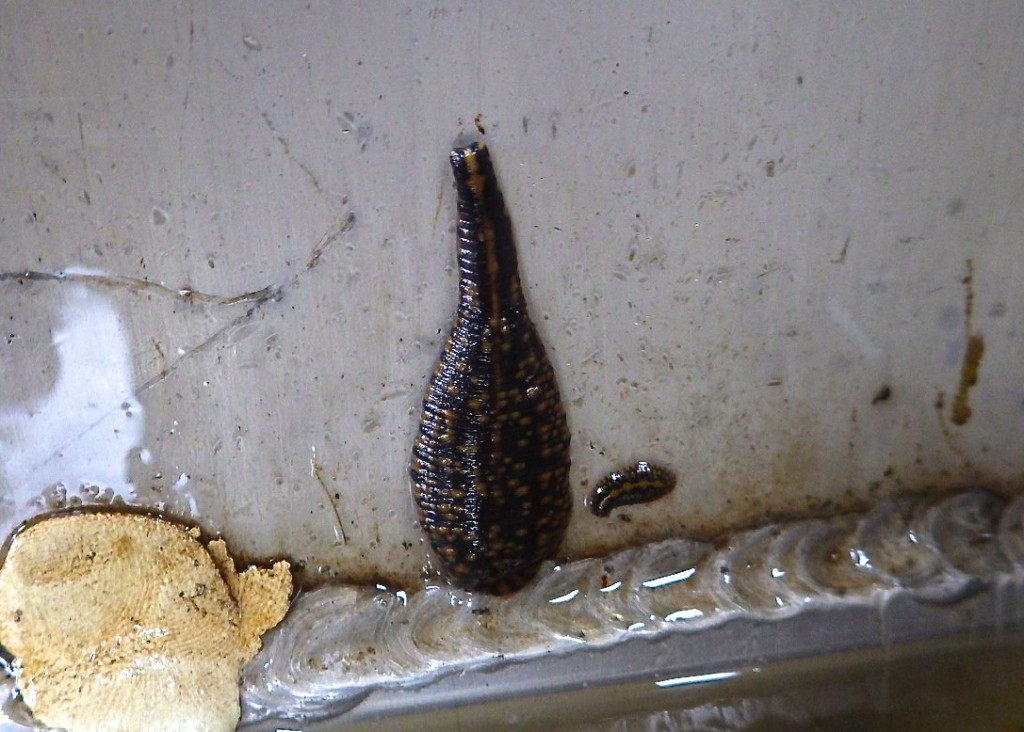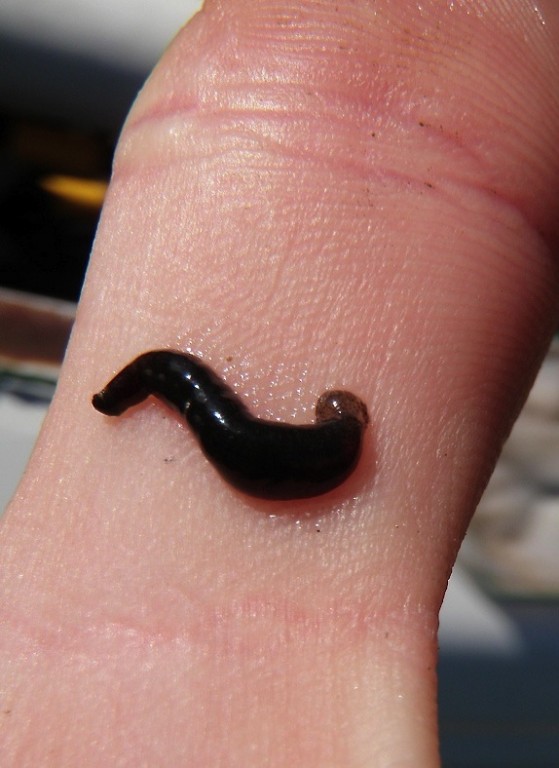Wednesday March 12, 2014
It’s not often we come across leeches in our fieldwork, but when we do they always spark our interest. We typically encounter leeches on rocks, under logs, and attached to fish – or is this case, our equipment – in freshwater areas like lakes, ponds, and rivers. However, leeches can also reside in saltwater and on land. Leeches are a type of parasitic annelid worm that have developed the ability to suck blood from their host. They are usually flattened from top to bottom, and have visible sucking discs at both ends of their bodies (see photo below). They have a distinct head with a mouth that consists of three cutting beaks within a sucking disc. The rear sucking disc is larger and used to anchor the leech in place. Their simple eyes only detect rough shapes, light, darkness, and motion.
The most infamous leeches are those that attach to and suck the blood of wading or swimming humans. However, of the 700 species of leeches worldwide, and 63 species in North America, only a few species latch on to humans (Sket and Trontelj 2008). Similarly, some leeches attach to and suck the blood of fish. Once engorged with the blood of their host, the leeches detach, leaving a hemorrhage mark at the site of attachment. Two common freshwater leeches, that parasitize fish include Piscicola geometra and Hemiclepsis marginata. Both species cause similar damage through their attachment and feeding.
Although they only reach up to three centimeters in length, leeches that attach to fish are normally easy to spot. They typically attach to the underside and fin bases of fish and have contrasting black and brown banding. Fish that remain still for long periods of time or have hunkered down in the benthic zone of a body of water are the usual target of leeches. Most fish can tolerate the occasional leech, and infections seldom reach problematic levels. However, heavy infections can result in lesions, hemorrhaging, and secondary infections from other disease organisms, including bacteria, protozoa, and viruses.


